DJI Mic Mini review: A little mic with big ambitions
DJI scales down its wireless mic for budget-conscious creators, delivering impressive sound quality and usability


The DJI Mic Mini is a compact, budget-friendly wireless microphone system that delivers excellent sound quality and robust features for its size. With impressive battery life, versatile compatibility, and user-friendly design, it’s a superb choice for beginner to intermediate creators, despite missing some pro-level features. A great addition to DJI’s growing content-creation ecosystem.
-
+
Highly portable
-
+
Excellent battery life
-
+
High-quality audio
-
+
Affordable price point
-
+
Versatile compatibility
-
-
Limited pro-level features
-
-
Clunky update process
-
-
No live audio monitoring
-
-
Only two transmitters can connect to one receiver
Why you can trust T3

DJI had a pretty busy year, and I’m not talking about the company’s tendency to flood the market with drones. No, in 2024, DJI decided to spread its wings and released power stations, e-MTB motors and a second iteration of its wireless microphone that became an instant hit with content creators.
You might think that there should be enough new products for a year, but clearly, you don’t think like DJI does. Ten months after the launch of the Mic 2, the brand announced the DJI Mic Mini, an affordable, super-lightweight version of the Mic 2.
The only reason why fewer people are talking about the Mic Mini is that it was launched during the Black Friday period, when everyone was busy buying stuff they didn’t need online. A shame, as just like the DJI Neo, the Mic Mini punches well above its weight in terms of functionality and design – although that’s exactly what I’d expect from the brand.
I’ve been testing the DJI Mic Mini for a few weeks alongside the Mic 2, and guess what? The Mic Mini has more than enough functionality for more content creators, bar the absolute pros. It cuts some corners, but nothing that would majorly spoil the fun.
DJI Mic Mini review
Price and availability
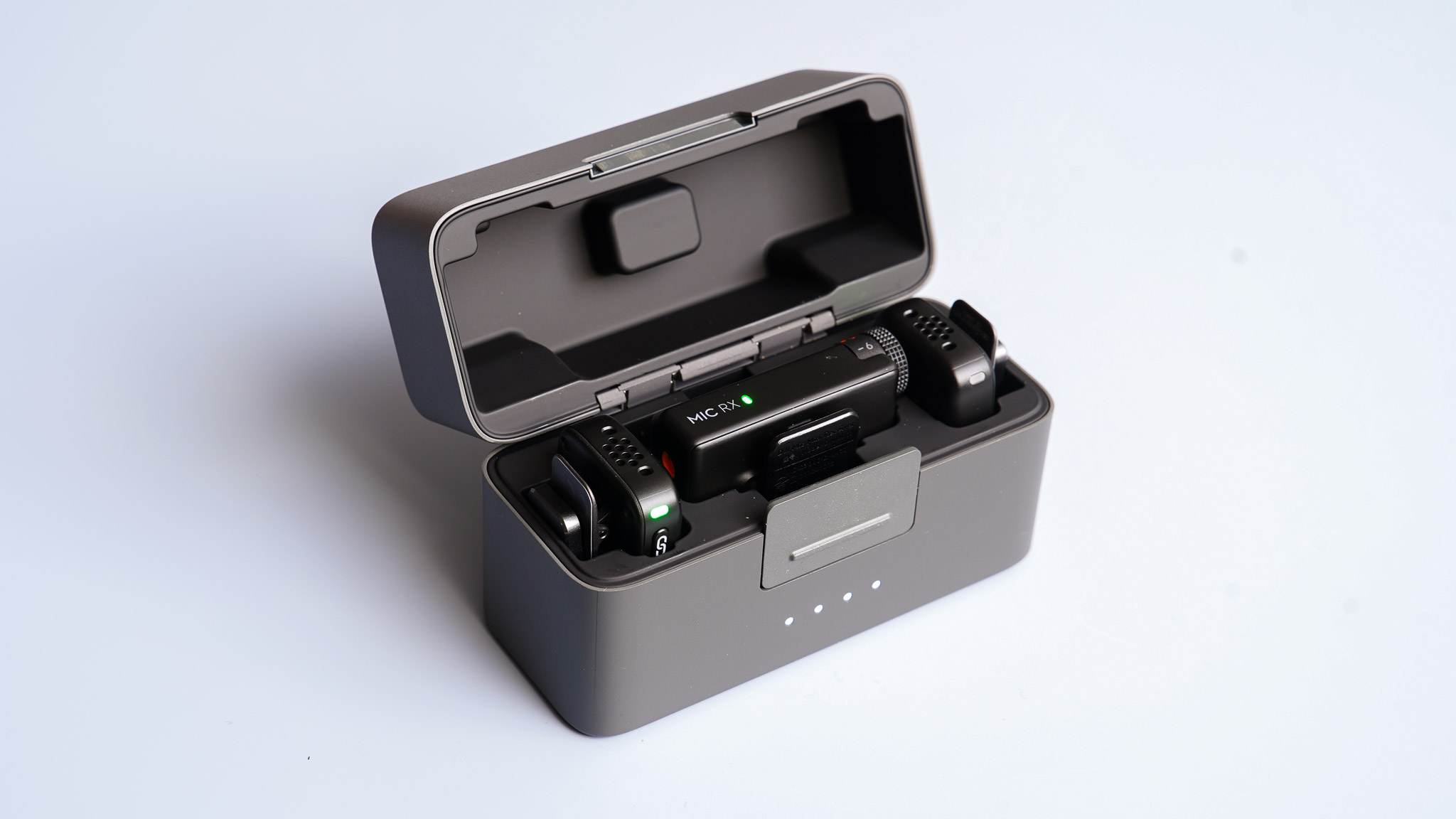
The DJI Mic Mini was launched in November 2024 and is now available at DJI and authorised retailers, with prices from £79/ $89/ AU$125 for the standard combo, which includes one transmitter and one receiver. You’ll have to shell out £145/ $169/ AU$245 for the setup with two transmitters, one receiver and a charging case, which still isn’t a lot of money for what you get.
Design and build quality
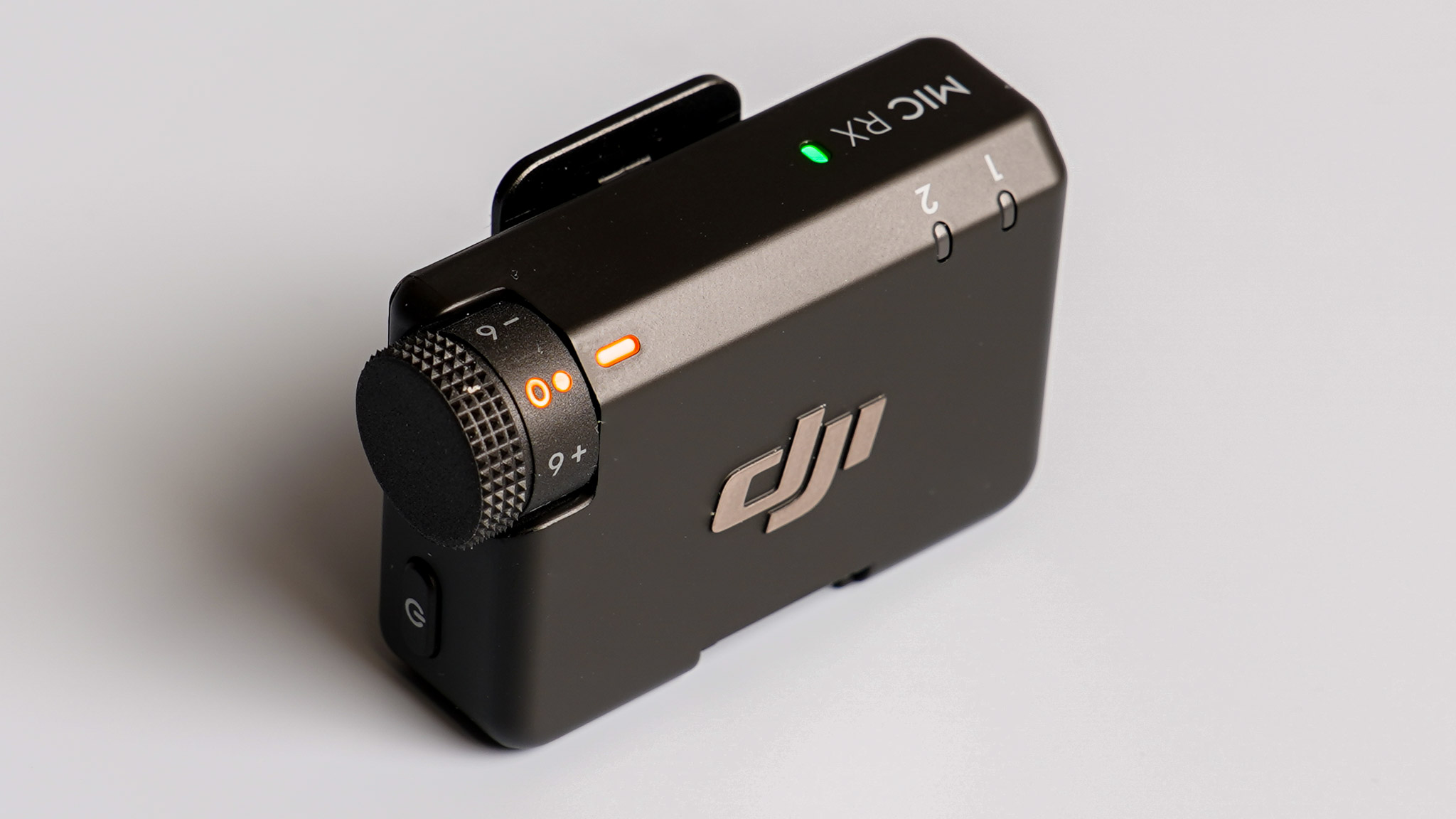
The DJI Mic Mini looks – as you’d imagine – like a smaller version of the Mic 2. The transmitter weighs only 10g, and the receiver is not much heavier at 17.8g. The transmitters are positively tiny, with tiny clips and, if you buy the bundle with the charging case, tiny windshields.
The transmitters come with magnets to help you attach them to your clothing more easily. The transmitter has two buttons: one to turn on the device and the other to pair it with the receiver or a smartphone.
Get all the latest news, reviews, deals and buying guides on gorgeous tech, home and active products from the T3 experts
The receiver is around one and a half times the size of the transmitter and is equally small. It also only has two buttons and a dial, the latter of which is to adjust the gain manually. Although there is no floating gain, which would make the microphone less likely to clip, the Mic Mini has an “Automatic Limiting” feature that helps to prevent audio clipping.
The charging case is the shrunken-down version of the Mic 2’s. I really like it; it feels sturdy, with a secure clip at the front to ensure the transmitters and the receiver don’t fall out no matter what. The bundle also includes a soft pouch to help carry the charging case and all other accessories (e.g. cables) together.
A big positive for me is that the transmitters can be stored in the case with the furry windshields installed. There isn’t enough space in the Mic 2’s charging case, but the Mic Mini is small enough to perform this trick.
A small downside of the design – and this is also true for Mic 2 – is the LED feedback. You have to know not just what the different lights mean but also the frequency of the flashing, as they can all mean different things.
I appreciate that there is less space on the device itself to communicate the different states, but figuring out which device the transmitters are connected to based on the LEDs can be a hassle.
A pet hate of mine is the little plastic cover that protects the connection port at the bottom of the receiver. You need to remove this to connect the USB-C plug, and there is no way to store it safely. It’s not a huge issue if it gets lost, but I like to keep my stuff tidy, and this rattling plastic in the case gives me the heebie-jeebies.
Audio performance
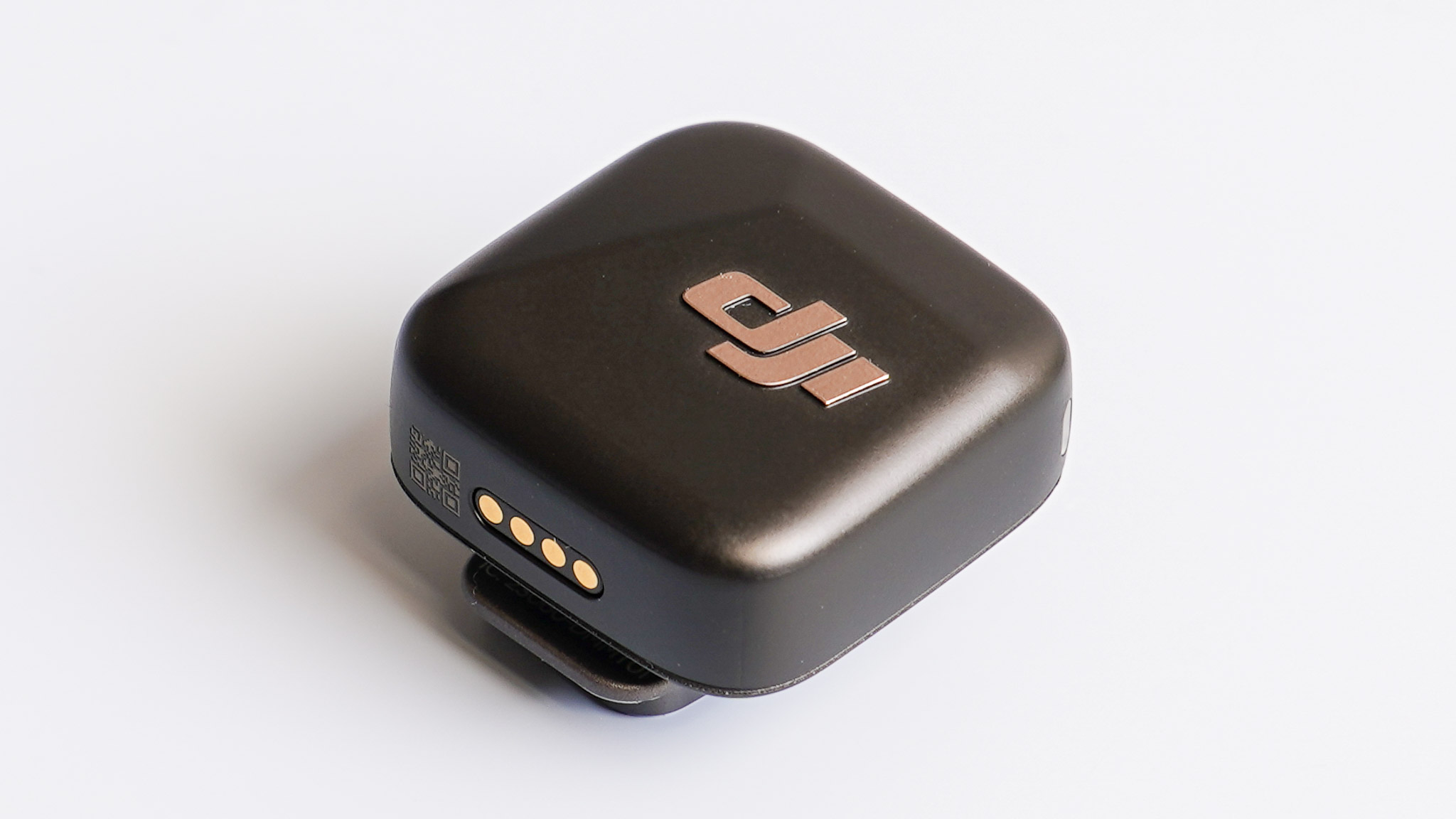
Despite its small size, the DJI Mic Mini delivers high-quality audio with an omnidirectional microphone that captures clear, crisp sound. Its automatic limiting feature is particularly appreciated, as it prevents audio distortion or clipping when recording in fluctuating sound environments.
It’s not impossible to clip the Mic Mini, though. I accidentally turned the dial once and held the transmitter close to my mouth, which resulted in the plosives causing some distortion. Of course, if I had the Mic Mini attached to my clothing, things would have been different, but I thought it was worth mentioning.
From what I can tell, there is no way to monitor audio using only the received and transmitters. If you connect the receiver to your smartphone using the plug attachment, you can see audio levels in the DJI Mimo app, but you won’t be able to monitor it live like when you use the display on the DJI Mic 2’s receiver.
The Mic Mini transmitters don’t have a headphone jack outlet, so you can’t connect lavalier microphones to them. Let’s not forget that the Mic Mini is an affordable, beginner-to-intermediate-level accessory, so it’s completely understandable that you miss out on some ‘pro’ features.
On a more positive note, the two-level noise-cancellation feature effectively reduces ambient noise, making it suitable for use in various recording scenarios, such as outdoor interviews or noisy indoor settings. You can change the level of noise-cancellation in the DJI Mimo app when the receiver is connected or press the power button until the LED turns solid yellow.
I keep mentioning the DJI Mic Mini's lack of pro features, but that doesn’t mean it hasn’t got any tricks up in its sleeve. Safety Track is one of these, which, in mono mode, records another track at a lower decibel (6 dB lower) as a backup. The Mic Mini also has a Low Cut feature to filter out lower frequencies. And, of course, there is Clipping Control that’s not quite 32db float recording, but it certainly adds to the appeal of the Mic Mini.
Battery life
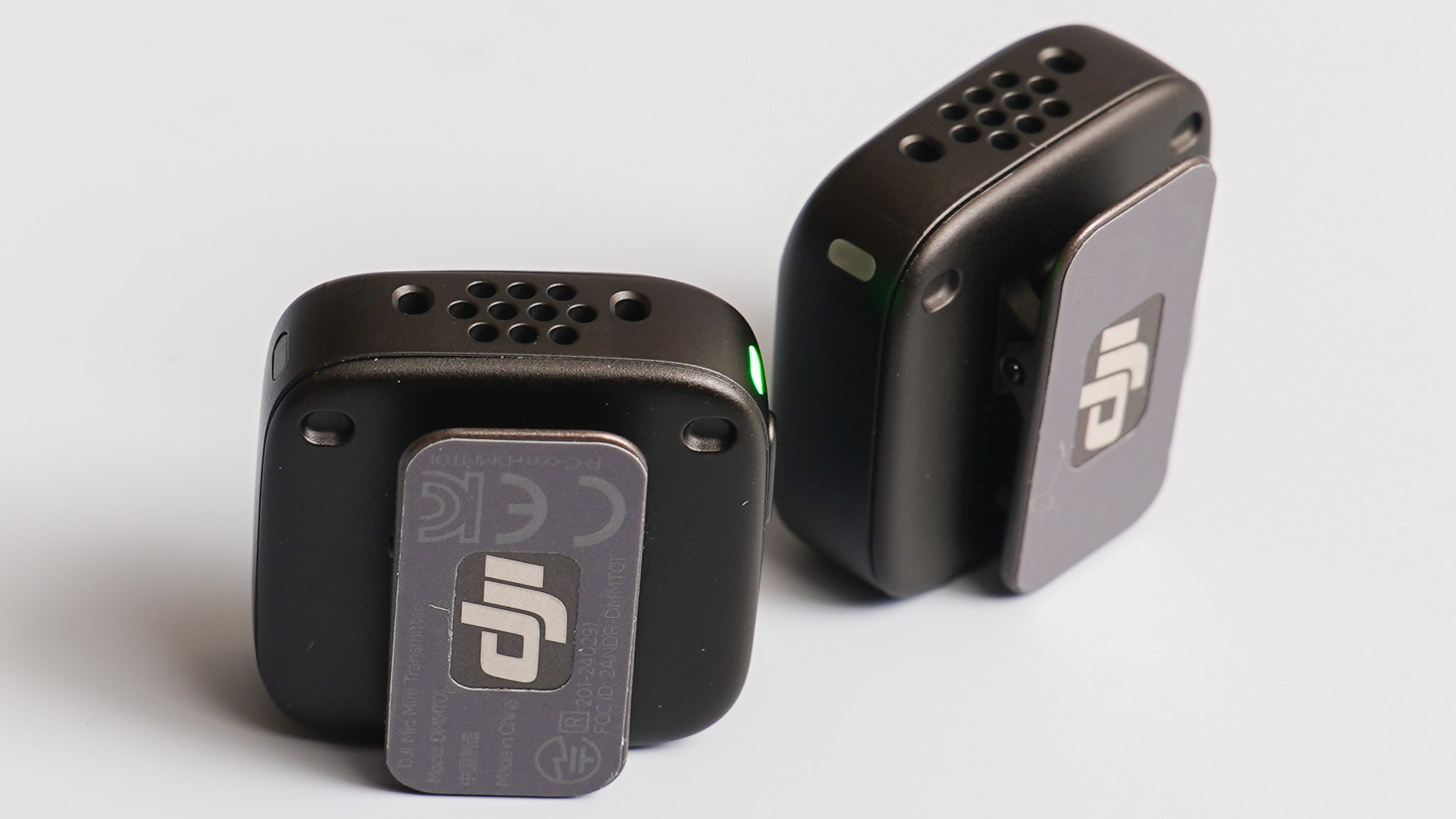
Battery performance is a highlight of the DJI Mic Mini. Each transmitter can operate for up to 11.5 hours on a single charge, and the charging case extends the total usage time to a remarkable 48 hours. Better still, the fast charging capability of the case also means minimal downtime between uses.
I found those stats to be quite accurate. I was really happy with the battery life of the Mic 2, and the Mic Mini continues to deliver incredible performance on this front. I can’t think of an application where you’d be out of juice using the Mic Mini!
Connectivity and compatibility

The DJI Mic Mini excels in its compatibility with a wide range of devices, including smartphones, DSLR cameras, and, of course, DJI drones. It has built-in Bluetooth, which enables you to connect it to all the above without a cable. It also has a little USB-C connector for smartphones and an audio outlet for DSLRs.
Even though the Mic Mini connects to most devices easily, some of the processes could be smoother. For example, updating the transmitters and receivers os only possible if you connect them to your phone via Bluetooth. This is all dandy, but you have to individually connect all units for the update, which is much longer than connecting the receiver via the USB-C dongle and do it in one go.
Another hindrance in terms of connectivity is that you can only connect two transmitters to one receiver. It’s all dandy if you’re content creating on your own and even if you occasionally involve another person. However, if there are three people involved, it’s too bad – two of them will have to pass a transmitter around to make it work.
Verdict
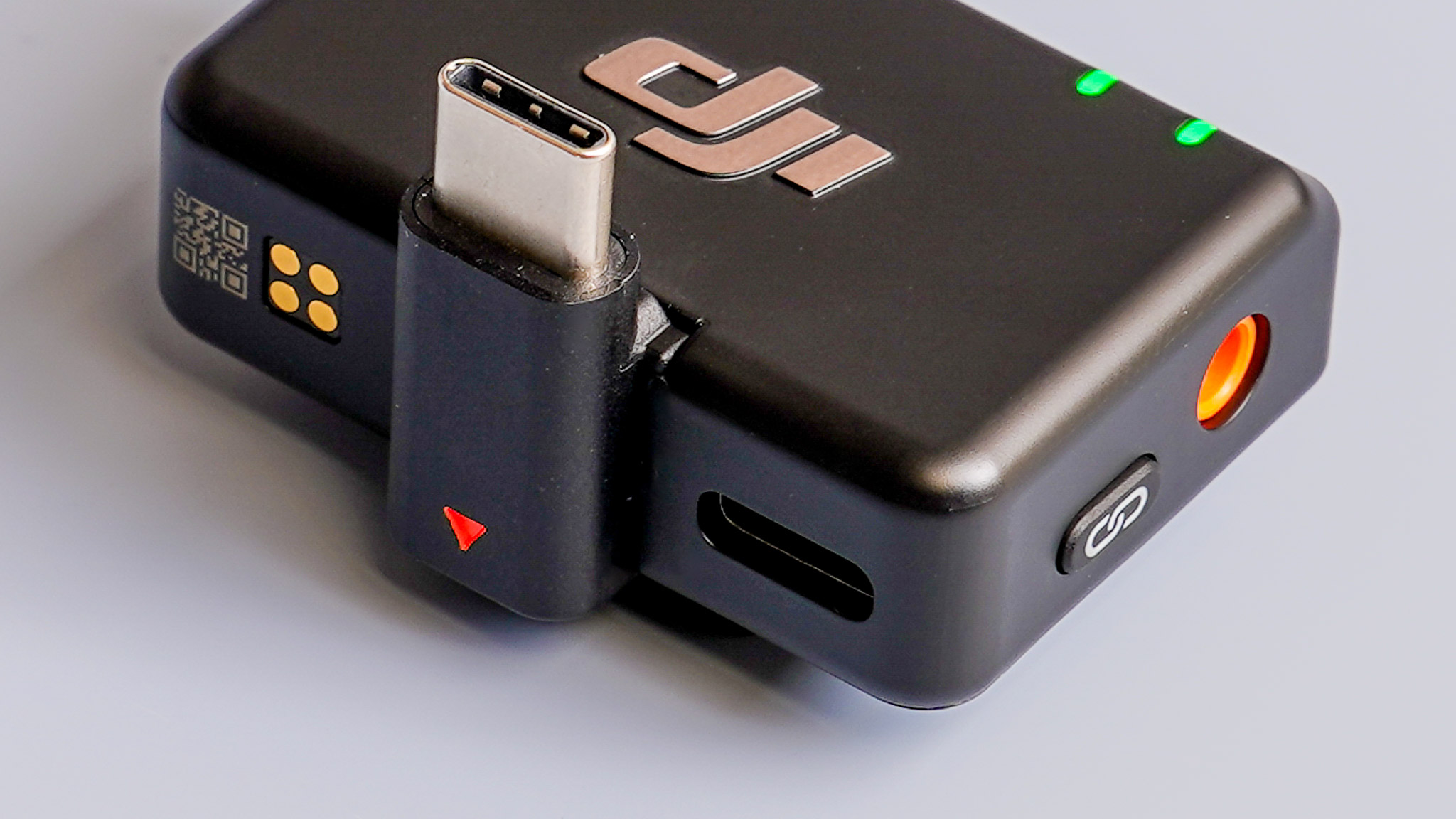
The DJI Mic Mini offers an attractive entry point into the world of wireless audio systems. It’s particularly appealing to beginners and budget-conscious creators who want reliable performance without investing in higher-end systems. It’s amazing value for money and works like a charm – like most DJI products.
If some of you might be confused why DJI keeps doing R&D on stuff like wireless mics, it’s because the brand realised – very rightly so, if I may add – what Apple knew all along, which is that you have an ecosystem with excellent products, no one will ever consider using stuff from other companies.
DJI on track to becoming one of the biggest content creation equipment companies, and the Mic Mini, the latest addition to its ever growing portfolio that includes, drones, action cameras, gimbals, and portable power stations, fits seamlessly into all this. It’s brill little thing that punches above its weight and will surely delight all creators, beginners and pros alike.
Also consider
Rode Wireless GO II: This compact system provides dual-channel recording with two transmitters, internal storage for up to 40 hours of audio, and a transmission range of 200 metres (656 feet). While it offers professional-grade sound quality, it's slightly bulkier and more expensive than the DJI Mic Mini.
Hollyland Lark M1 Duo: Known for its effective noise reduction and long-distance transmission, this system includes a charging case that allows simultaneous charging of all units. It's a solid choice for those seeking reliable performance in noisy environments.
Saramonic Blink 500 B2+: Designed for portability, this system is ideal for mobile journalists and content creators using smartphones. It offers a range of up to 150 metres (492 feet) and is compatible with iOS and Android devices, making it a versatile option for on-the-go recording.
BOYA BY-XM6 S2: This compact wireless microphone system is tailored for social media content creators seeking to enhance audio quality. It's an affordable starting point for those looking to upgrade their sound without a significant investment.

Matt Kollat is a journalist and content creator who works for T3.com and its magazine counterpart as an Active Editor. His areas of expertise include wearables, drones, fitness equipment, nutrition and outdoor gear. He joined T3 in 2019. His byline appears in several publications, including Techradar and Fit&Well, and more. Matt also collaborated with other content creators (e.g. Garage Gym Reviews) and judged many awards, such as the European Specialist Sports Nutrition Alliance's ESSNawards. When he isn't working out, running or cycling, you'll find him roaming the countryside and trying out new podcasting and content creation equipment.